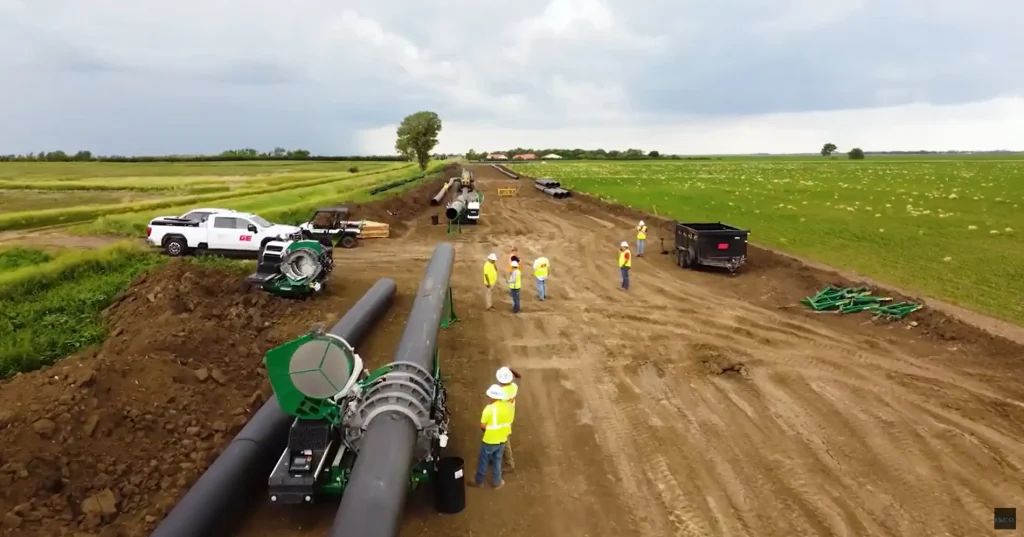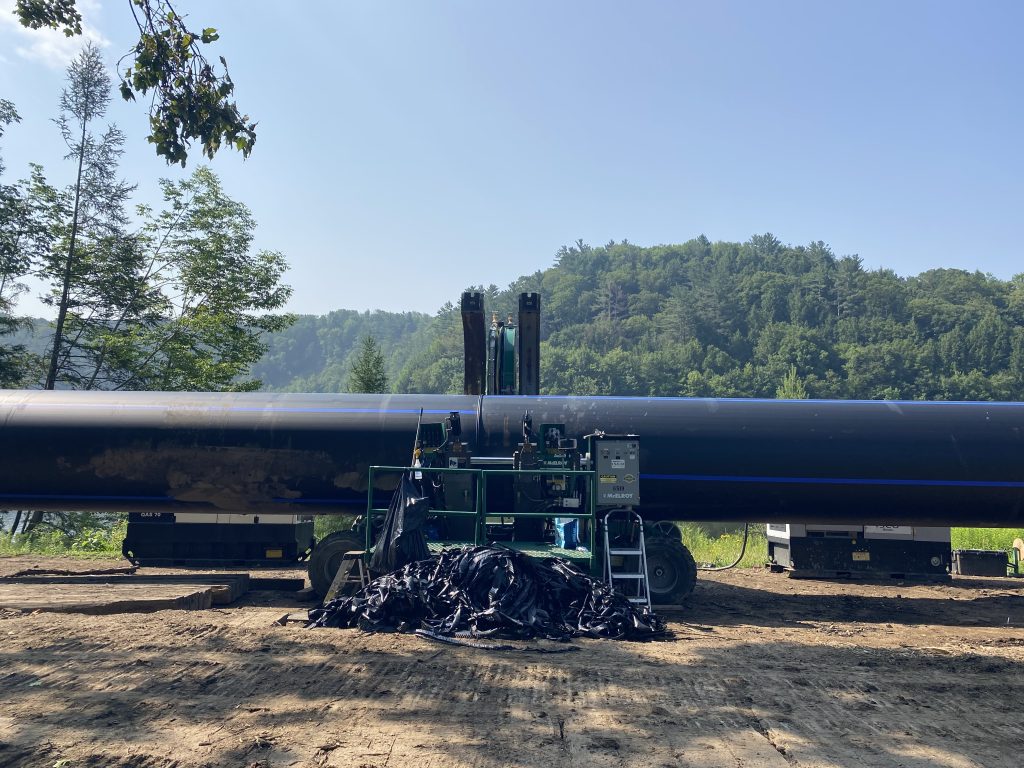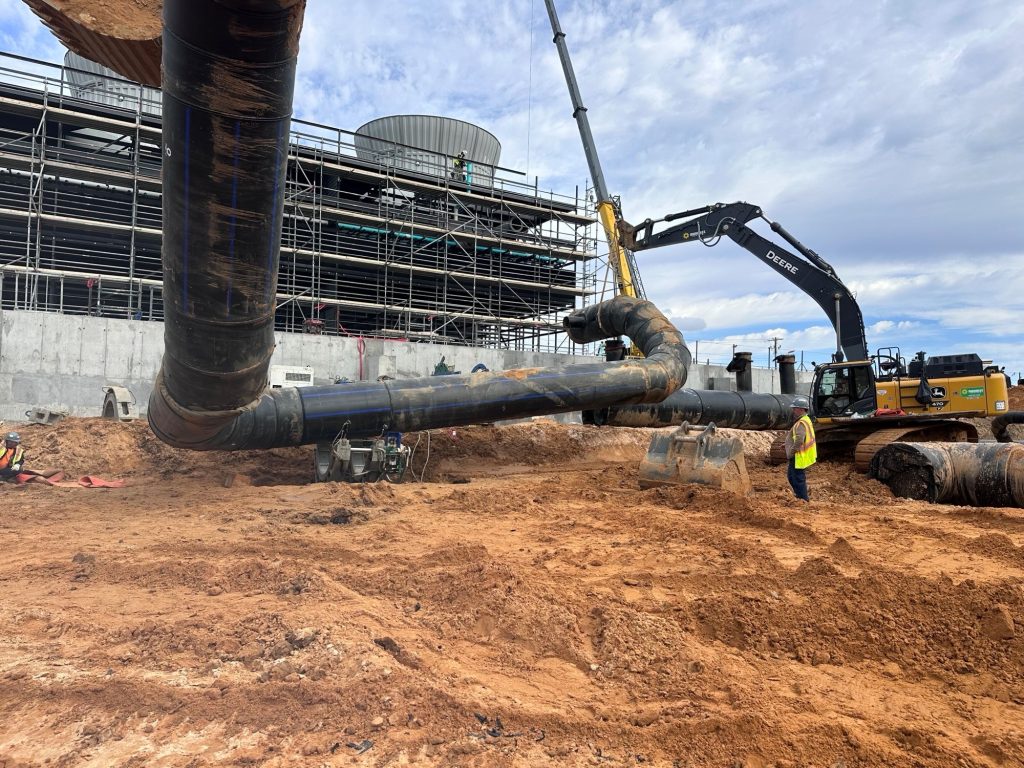Resources
Field Reports
Snap-Tite Columbia, KY
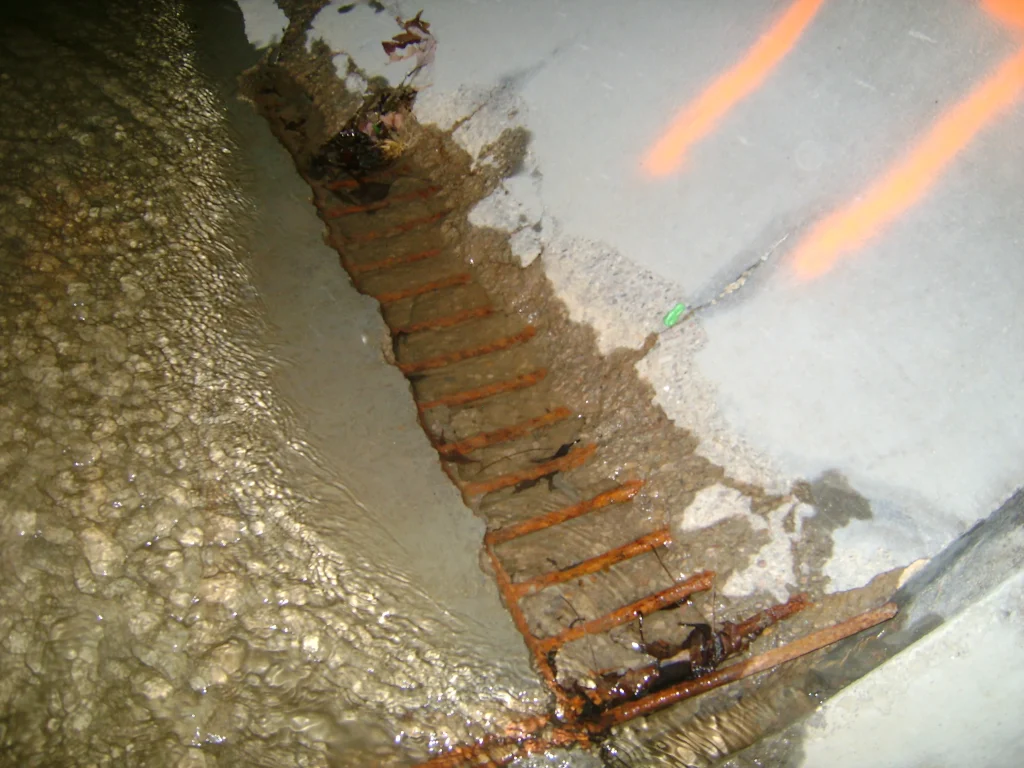
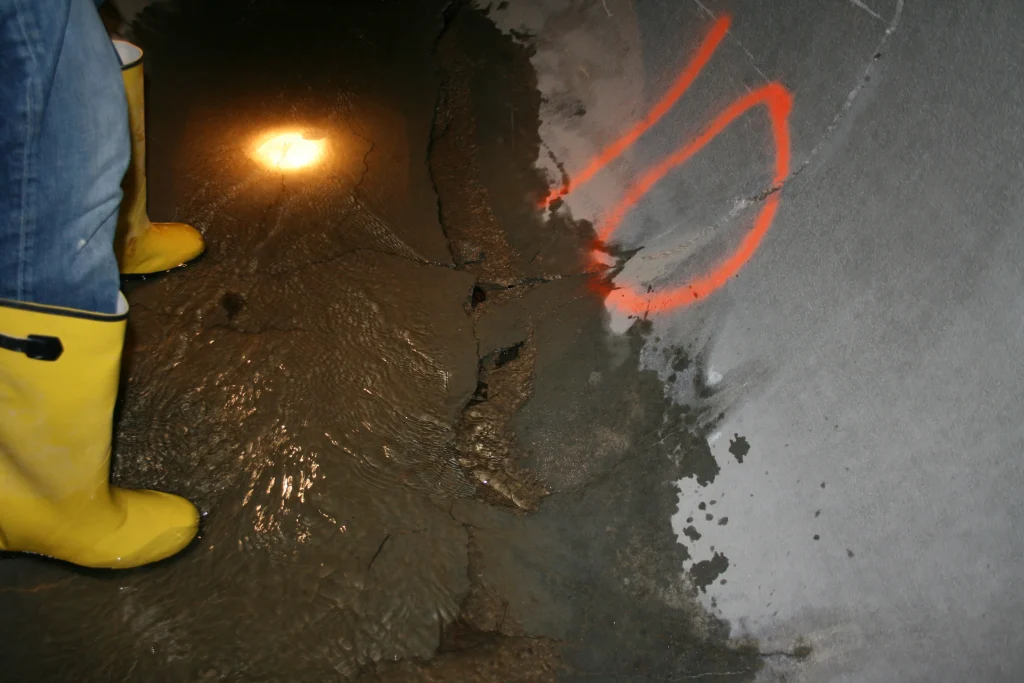
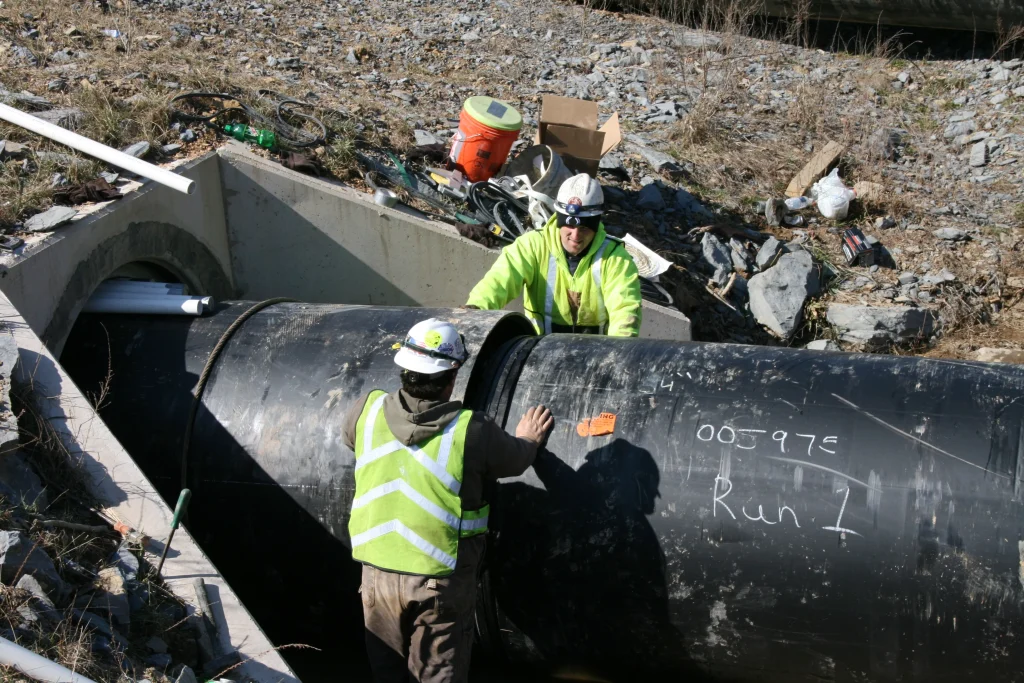
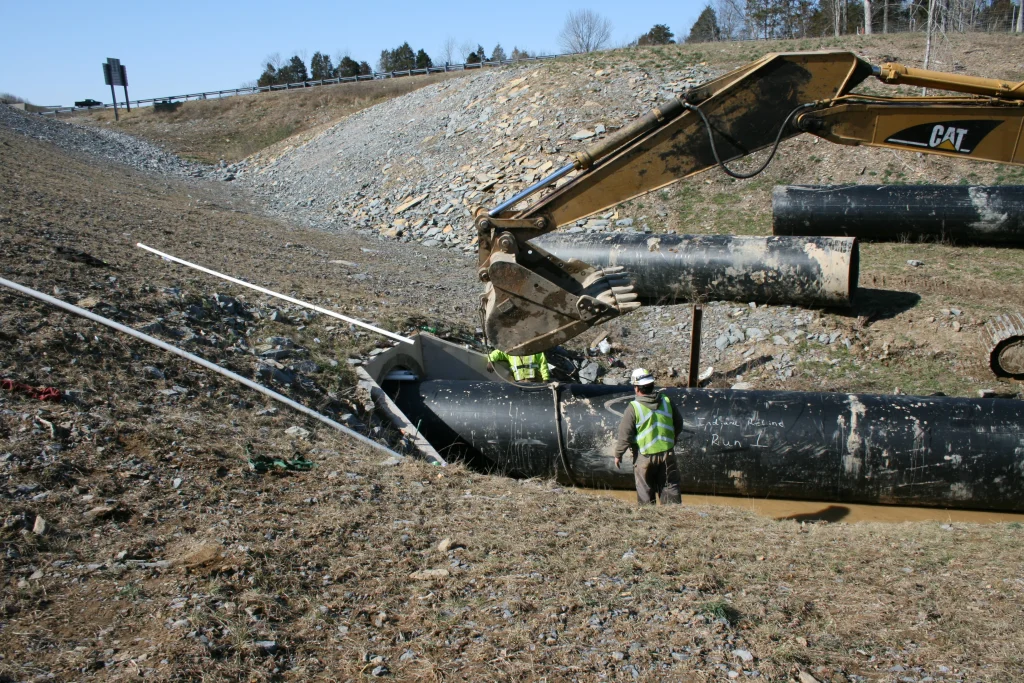
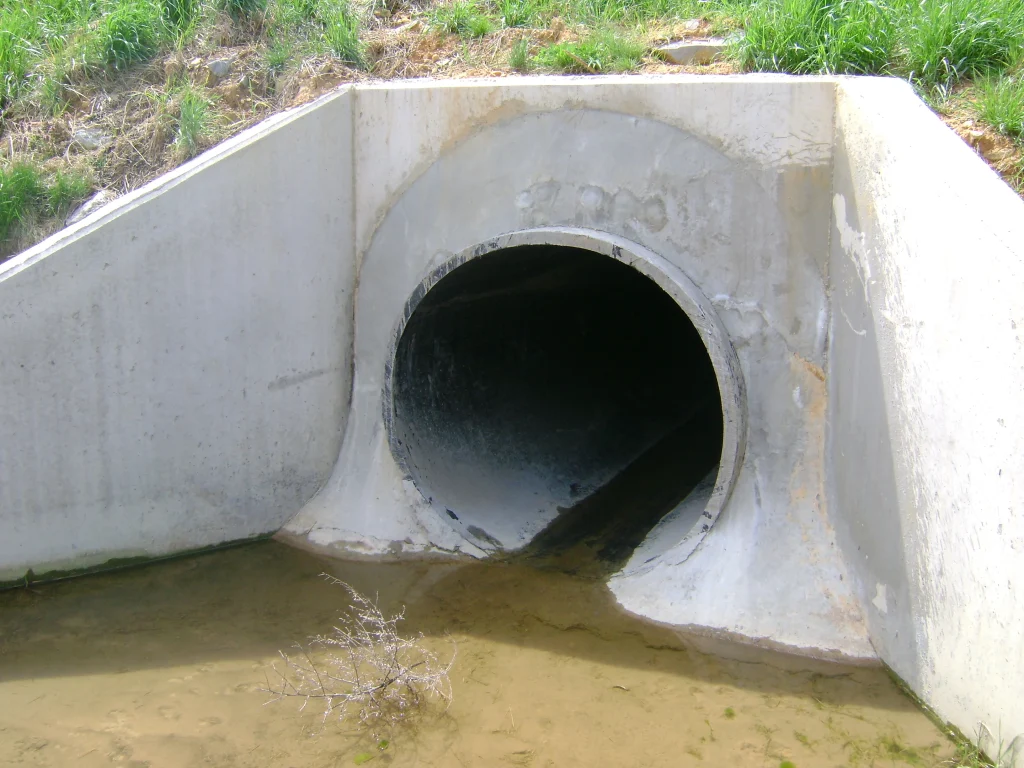
Our purpose is to help customers choose solutions which will insure that the process fits the application and do this reliably and cost-effectively. All information in this field report will assist the engineer to reduce cost and minimize future maintenance costs.
Abstract
Kentucky Department of Transportation District 8 faced an expensive problem with little time for decisions making. This Field Report presents an existing application where an installation of a Reinforced Concrete Pipes (RCP) pipe just one year before was failing and rehabilitated using Snap-Tite HDPE Pipe.
Introduction
Columbia, KY had built a new stretch of highway and overpass in 2007 to alleviate traffic in the downtown area of Columbia. One year later the two 60-inch RCPs were direct buried over 40 feet of fill, the pipes started to fail, causing major concern with the KY DOT. There was a need to evaluate a less costly alternative repair method than to dig up the new stretch of road.
The Problem
Cracking along the parts of the culvert were popping up, along with exposed re-bar inside the pipe. The joints started to separate, exposing the gaskets. On the southbound pipe the water on the inlet side was actually flowing under the first two sections of the RCP pipes. And, in one part of the northbound pipe, the RCP had collapsed over eight inches. At this rate, the culvert was due to collapse at any moment.
The Solution Applied
Ryan Harrington, the Snap-Tite manufacturer’s representative received a call from the KY DOT in order learn if Snap-Tite was a viable a solution to rehabbing their problem. Harrington spoke in length with Mark Robertson, resident engineer for District 8, as well as with other DOT employees about the benefits of Snap-Tite. After a site visit to look at the problem first-hand, they determined that 54-inch OD Snap-Tite HDPE Pipe was a good solution to rehab this culvert. By using the 54-inch Snap-Tite, the culvert would actually have a four percent greater flow rate due to the smooth-wall interior.
Harrington also provided a direct-bury load analysis on Snap-Tite HDPE Pipe since the RCP was in such poor condition. The analysis showed that with proper grouting and installation, Snap-Tite would exceed their expectations of having the pipe close to 50 feet beneath the road.
Harrington then brought in Chris Wisehart with Indiana Reline to perform the installation. District 8 decided to proceed with Snap-Tite as its method of choice for the application. Snap-Tite, Indiana Reline and the Kentucky DOT District 8 had to move quickly in order to build the pipe, ship it, snap it and install it before the old culvert collapsed anymore.
Before the crew snapped and installed the Snap-Tite liner, they prepped inside the old culvert. They installed grouting tubes along the top of the culverts and pumped grout on the inlet side of the southbound pipe to get the water to actually flow inside the culvert instead of under it. Then Indiana Reline snapped the pipe together and inserted it into both culverts. Once they completely the pipe completely into the space, the crew built bulkheads on each end of the pipes to keep the soon-to-be pumped grout from flowing out.
They then grouted the liner into place a few days later, completing the project with a culvert better than before and with increased flow capabilities.
Because of Snap-Tite’s ‘snap’ joint, the process increases the speed and ease of installation. It features a watertight ASTM-approved gasket to withstand the grouting application. No special equipment was necessary other than a backhoe, shovels, chain binders and cables. “Hot soils” do not affect Snap-Tite, as the HDPE pipe works well in any pH range, with no corrosion.
